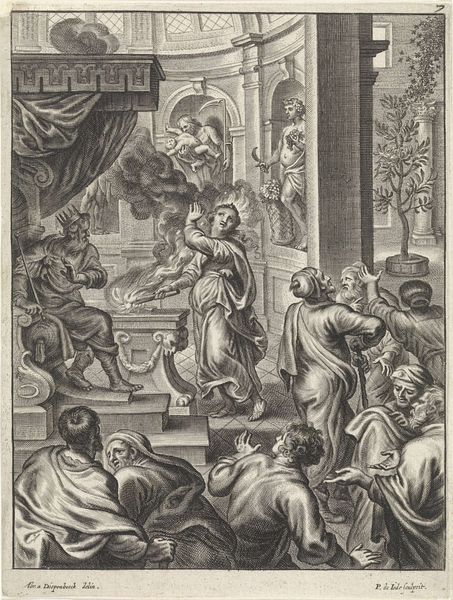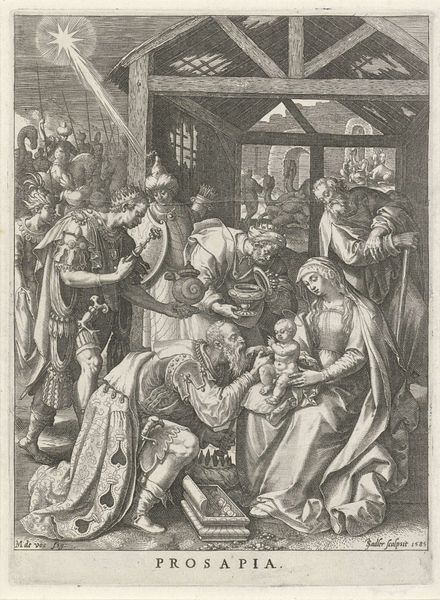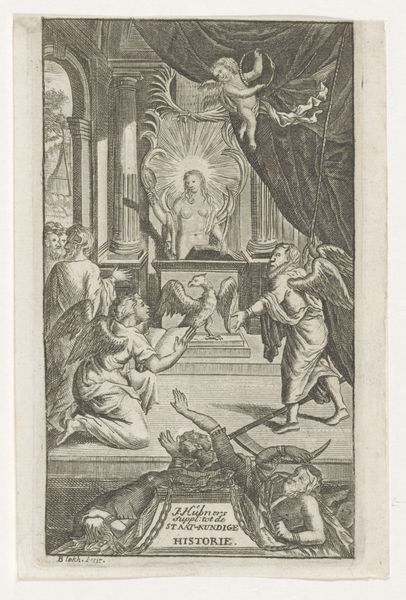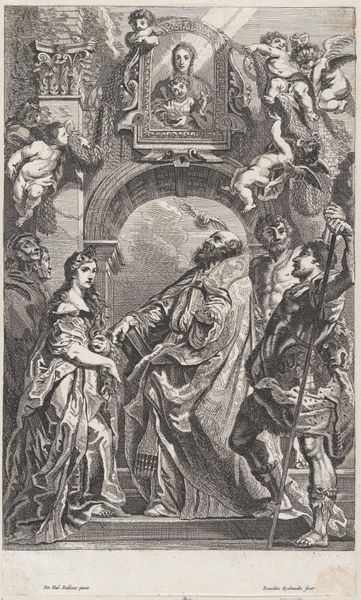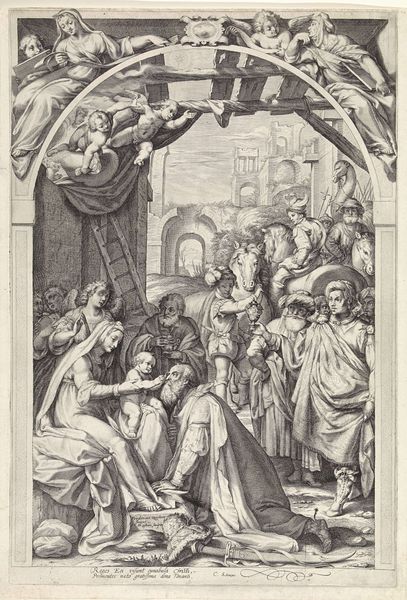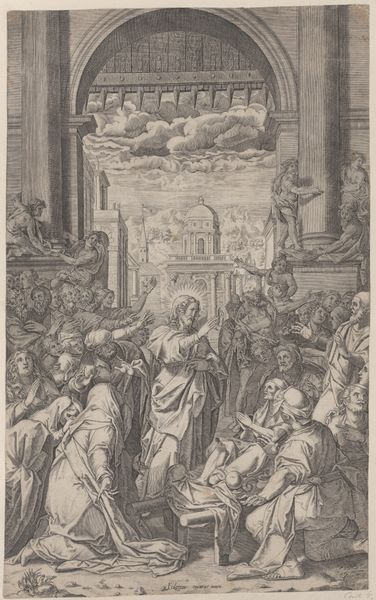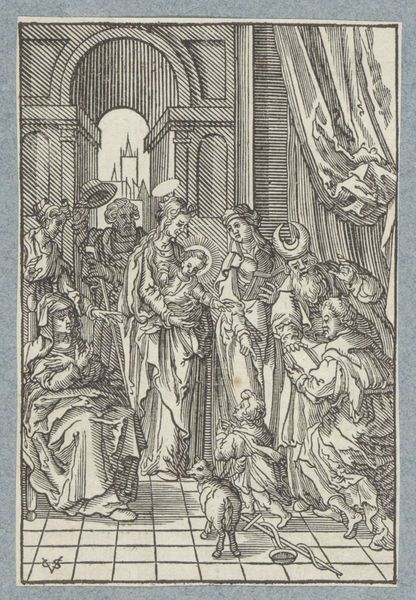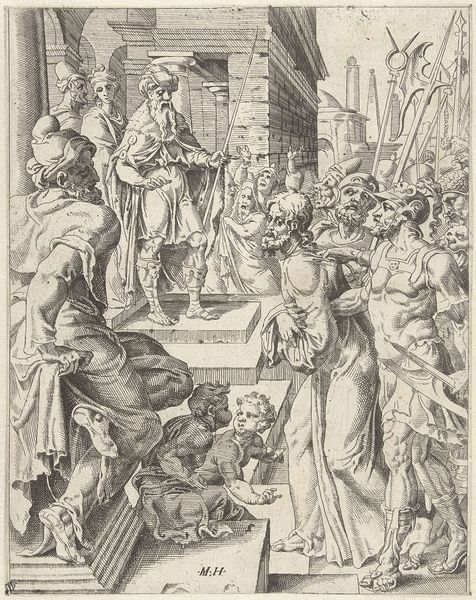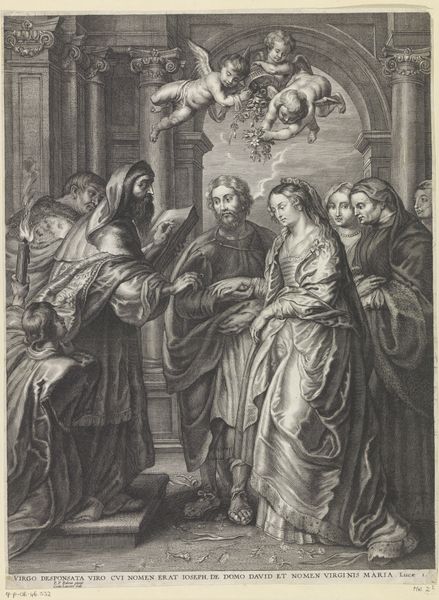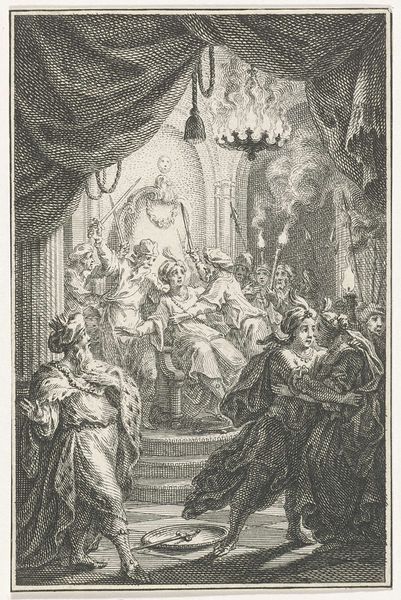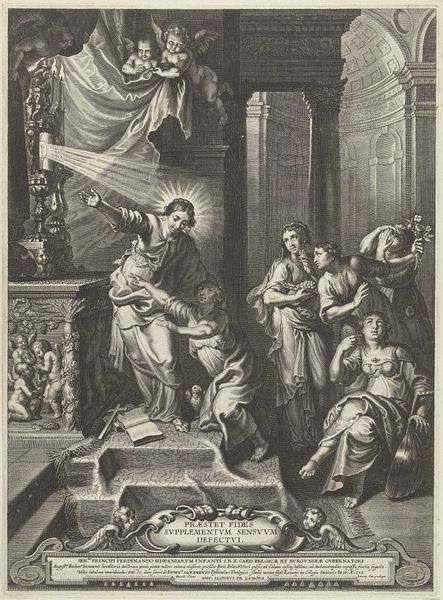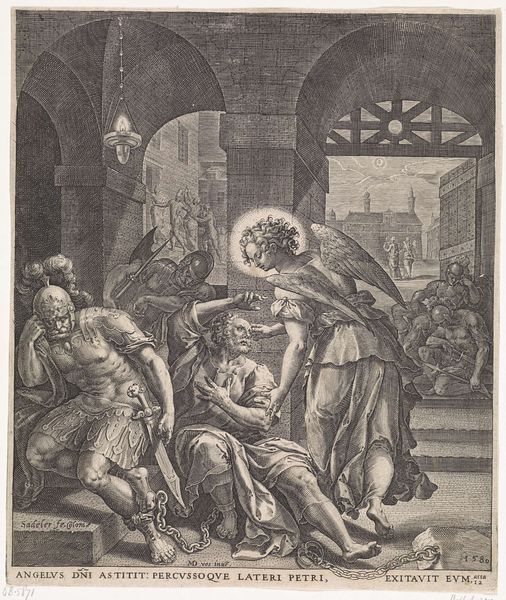
print, engraving
#
baroque
# print
#
figuration
#
line
#
history-painting
#
engraving
Dimensions: height 494 mm, width 337 mm
Copyright: Rijks Museum: Open Domain
Curator: The image before us is an engraving from 1684 by Willem de Ryck entitled "Heilige Catharina voor de rechters," depicting Saint Catherine before her judges. It's rendered in a distinctive line style typical of Baroque prints. Editor: The first impression is that it feels rather theatrical, a bit stagey, really. The figures are so densely packed and expressive, it's quite busy but also somewhat dramatic. I am interested in this sense of almost industrial image creation by the prints, since it reproduces narrative so that more can see it. Curator: Indeed. The composition reflects Baroque sensibilities – dynamism, emotion. Saint Catherine stands defiant as she debates pagan philosophers, and what captures one's attention is the careful depiction of each figure's emotions. De Ryck really paid attention to cultural memory of this narrative. The judges above her seem like shadows in her struggle of free thought. Editor: Look closely at the engraver's work. De Ryck employs fine, deliberate lines to craft the folds of the garments and to give them their textural complexity. I'm struck by how the tools allowed for capturing all those intricacies through this printmaking. Curator: Absolutely, but it also communicates power dynamics symbolically. Catherine radiates composure while figures like the judge seem unsettled. There's a clear visual encoding here where composure and clothing reflects divine inspiration to stay composed, even in the face of violence and injustice. Editor: Yes, that texture highlights a hierarchy of value and importance. Notice also how much of the action sits to the front, closer to the viewer. This arrangement pushes the scene, with Catherine herself very forward, confronting, which allows more copies and iterations through circulation, really heightening this narrative of virtue, trial and judgement to the audience during that era. Curator: Examining such art can bridge gaps between various temporal contexts by allowing us access to shared memories. These enduring depictions offer opportunities for revisiting psychological themes prevalent at that time, such as faith, doubt, or resolve under intense adversity. Editor: By considering the materials, by emphasizing the materiality itself, that the virtue exists because of such materials for producing the meaning that matters, we unveil that, while De Ryck was clearly a talented artist, social practices played essential roles as well.
Comments
No comments
Be the first to comment and join the conversation on the ultimate creative platform.
